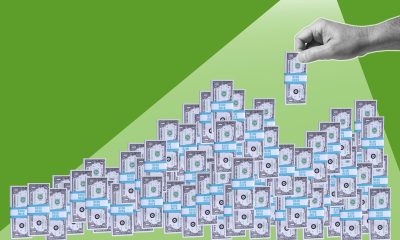Investing
Oil up 4% on week after dollar slide, belated response to U.S. exports

© Reuters.
By Barani Krishnan
Investing.com — It was a belated response by oil longs though not entirely surprising, given the outsized exports for last week. Crude prices jumped almost 2% Friday and over 4% on the week in a catch-up to record crude exports reported by the EIA for last week.
New York-traded settled at $79.68 a barrel, up $1.52, or 1.9%. For the week, the U.S. crude benchmark gained 4.4%.
London-traded settled at $85.83, up $1.08, or 1.3%. The global crude benchmark was up 3.7% on the week.
Crude prices started the week with a stumble, then gained momentum on positive factory data from top oil importer China.
Hawkish rate hike talks and inflation concerns kept the market from breaking out after the EIA, or Energy Information Administration, reported on Wednesday that U.S. crude exports hit a record high of 5.629 million barrels last week.
Friday’s session was again volatile as prices initially tumbled on a Wall Street Journal report that the United Arab Emirates had an internal debate about leaving OPEC and pumping more oil. By midmorning though, the market retraced the losses and headed higher on the back of a weaker after a Reuters report quoted a UAE official as saying that the WSJ story was “far from the truth.”
Notwithstanding Friday’s runup, crude prices look set to stay in a range, with WTI likely to be boxed between $75 and $80, said Craig Erlam, analyst at online trading platform OANDA.
“Prices have fluctuated in a range for months now and the current price sits more-or-less in the middle of that range. While traders are becoming more optimistic about the Chinese recovery, the risks to the global economy may be increasing as interest rate expectations have risen,” said Erlam.
“The range does appear to be gradually tightening but remains quite large and there appears little appetite for a breakout at this moment in time.”
Downside risks could escalate again in the coming week when the Labor Department releases the U.S. report for February. The so-called NFP report is expected to show a slower jobs growth of 200,000 for last month after the blowout 517,000 in January.
Runaway jobs growth — and spending by Americans — has made the Federal Reserve’s task of curbing inflation much harder than the central bank had expected.
“Core foreign inflation remains high and inflationary pressures are broad,” the Fed said in its semi-annual report to Congress. Referring to its policy-making Federal Open Market Committee, the central bank said: “The committee is strongly committed to returning inflation to its 2% objective. Ongoing increases in the target range will be appropriate in order to attain a stance of monetary policy that is sufficiently restrictive.”
The , a broad gauge of inflation, hit a 40-year high of 9.1% for the year to June 2022. It has moderated since to an annualized growth of 6.4% in January but remains well above the Fed’s target of just 2% per year.
To clamp down on runaway price growth, the Fed added 450 basis points to interest rates since March last year via eight hikes. Prior to that, rates stood at nearly zero after the global outbreak of the coronavirus in 2020.
The Fed’s first post-COVID hike was a 25-basis point increase in March last year. It then moved up with a 50-basis-point increase in May. After that, it executed four back-to-back jumbo-sized hikes of 75 basis points from June through November. Since then, it has returned to a more modest 50-basis-point increase in December and a 25-basis-point hike in February.
Rate for the Fed’s March 22 policy meeting, monitored by foreign exchange traders, remained largely at 25 basis points on Friday, though that could change with the increasing calls for tighter policing from the central bank’s hawks.
“U.S. jobs numbers have surprised to the upside month after month and there’s a chance that February could give us another jolt,” said John Kilduff, partner at New York energy hedge fund Again Capital. “If that’s the case, rate expectations will be skewed to the upside again, and risk assets will suffer. Oil is certainly not out of the woods.”
Read the full article here

-

 Side Hustles7 days ago
Side Hustles7 days agoHow Charlotte’s Rally Pickleball Got Its Start
-

 Make Money7 days ago
Make Money7 days ago5 Surprising Ways Trump’s Trade Agenda Could Affect What You Pay at Checkout
-

 Investing7 days ago
Investing7 days agoQuantum stock soars on new file system client By Investing.com
-

 Side Hustles5 days ago
Side Hustles5 days agoKickstart Your Year With These Entrepreneurial Health Checkups
-

 Side Hustles4 days ago
Side Hustles4 days agoExpand Your Global Reach with Access to More Than 150 Languages for Life
-

 Side Hustles3 days ago
Side Hustles3 days agoKFC Announces Saucy, a Chicken Tenders-Focused Spinoff
-

 Investing3 days ago
Investing3 days agoPalantir, Anduril join forces with tech groups to bid for Pentagon contracts, FT reports By Reuters
-

 Side Hustles4 days ago
Side Hustles4 days agoThis AI is the Key to Unlocking Explosive Sales Growth in 2025


















